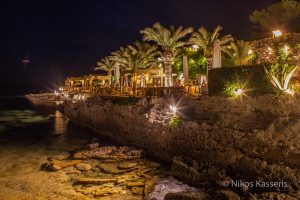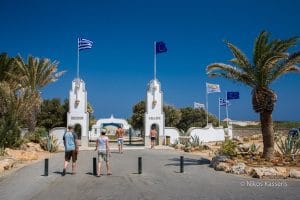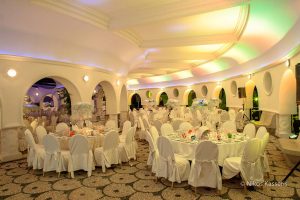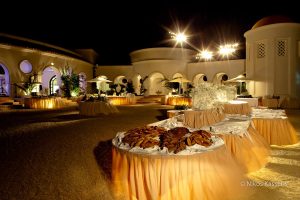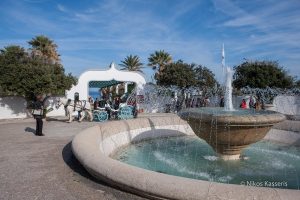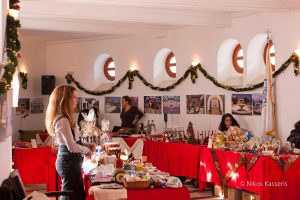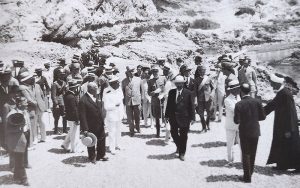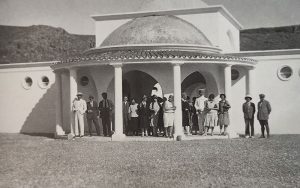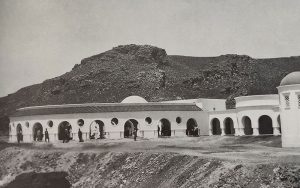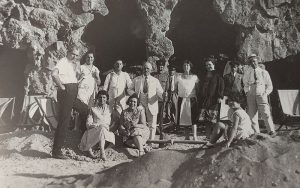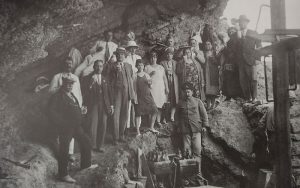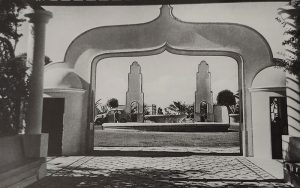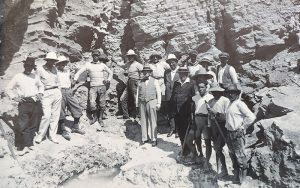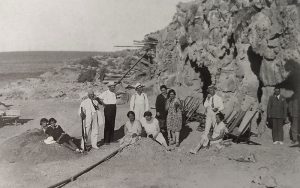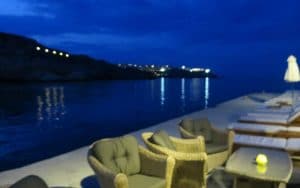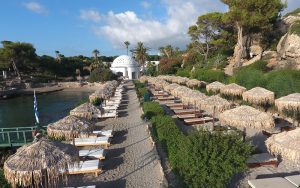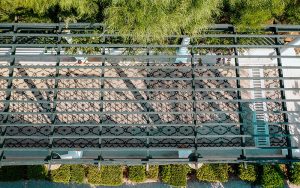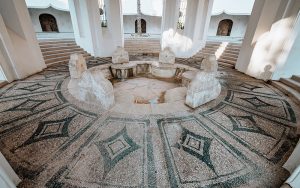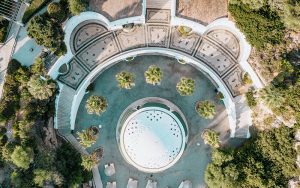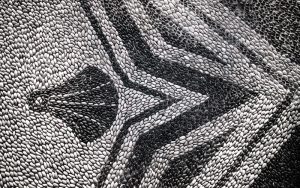

INTRODUCTION
Buildings emerging behind the rocks as if they were to complement the work of nature… Pathways swerving in the shade of palm and pine trees… A one of a kind architecture embracing the environment. Pebble-strewn floors like strokes of rock exchanging glances with the emerald green shades of the translucent sea and the cavernous mystery of the natural caves. Every turn becomes the setting for the next perfect image which visitors are bound to enjoy in the site of Kallithea Springs.

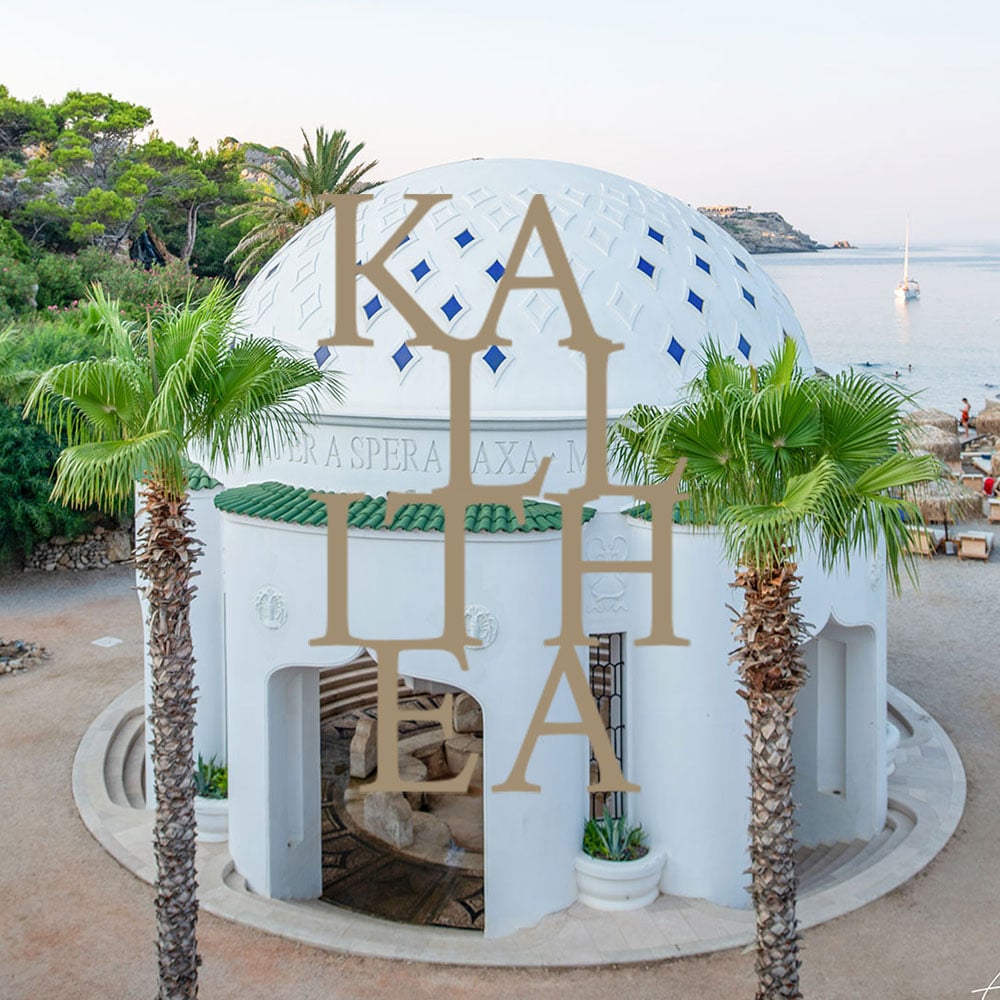

INTRODUCTION
Buildings emerging behind the rocks as if they were to complement the work of nature… Pathways swerving in the shade of palm and pine trees… A one of a kind architecture embracing the environment. Pebble-strewn floors like strokes of rock exchanging glances with the emerald green shades of the translucent sea and the cavernous mystery of the natural caves. Every turn becomes the setting for the next perfect image which visitors are bound to enjoy in the site of Kallithea Springs.

THE STORY
BEHIND THE SITE
Fortunately, there was an early detection of the curative properties of these water springs, in a country where water has traditionally been valued highly enough to be placed under the auspices of a dedicated god – Neptune. Back in the 5th century BC, Herodotus and Hippocrates as well as other prominent medical doctors of the Hellenistic Era like Herophilus (330 BC) and Erasistratus (320 BC) delved into hydrotherapy which encompassed two distinct subtypes of cure, namely thermalism and positherapy.
The reddish water surging from a particular, rocky formation somewhere in the middle of the left bank of Kallithea bay had already attracted people’s attention in times past. Especially in August and September, numerous "patients" arrived with their families and stayed either in temporary accommodation or in the “kouspes”, the natural cavities of the surrounding rocks. Christian Orthodox, Muslims and Jews would serenely gather in the peaceful surroundings.
And yet, war arrived here too, in the form of the Italian military forces on the 5th of May 1912. Several years later, the Italian Governor of the Dodecanese, Mario Lago, grasped the importance of the cultural and political aspects of the site, so much as to integrate it in the overall development plan of the island of Rhodes.
In 1928, Pietro Lombardi, an established architect of wide acclaim in Rhodes, was assigned the project of designing the buildings that were to constitute the complex. Another Architect, Armando Bernabiti, was entrusted with decorative works, a task carried out in full respect for the natural environment, creating demure lines and the softest circular motifs, set in three different levels. The attribute chosen for the Springs was “Royal”, to denote their sublimity, hence the fact that the Italian King himself, Vittorio Emanuele, honored the ceremony of inauguration of the site with his presence, which was celebrated on the 1st of July 1929.
One year later, Aeneas Brunetti, an MD, was assigned to the Kallithea Springs complex, along with Alberto Mocchi, chief medical officer of the Italian Hospital in Cairo and a medical advisor to the Springs. Alberto Mocchi hosted an international hydrological colloquium which attracted more than 200 scientific specialists and MDs of various specialties, with the purpose of reconfirming the multiple benefits to be expected from the exploitation of the Springs as a whole. This event triggered a glorious period for the Springs of Kallithea, as visitors discovered that multiple catharsis – both physical and mental – was possible in the serenity of these wondrous settings.
At the end of World War II, however, Italy was powerless and the site of the Springs at Kallithea was in decay. The Germans had in the meantime turned the complex into a penitentiary. Barbed wire and minefields had transformed the once impressive spa into a place of dismay… A mirror of the political conjuncture of the time. A lamentation of civilization corroded by war.
In 1948, the Dodecanese became part of the Hellenic national territory, albeit without any significant improvement to the mournful state of decay of the Springs. It was only thanks to funds made available under the US “Marshall” Aid Plan for the financial recovery of the island that the Springs made a humble attempt to reopen, only to shut down for good, in 1967.

THE STORY
BEHIND THE SITE
Fortunately, there was an early detection of the curative properties of these water springs, in a country where water has traditionally been valued highly enough to be placed under the auspices of a dedicated god – Neptune. Back in the 5th century BC, Herodotus and Hippocrates as well as other prominent medical doctors of the Hellenistic Era like Herophilus (330 BC) and Erasistratus (320 BC) delved into hydrotherapy which encompassed two distinct subtypes of cure, namely thermalism and positherapy.
The reddish water surging from a particular, rocky formation somewhere in the middle of the left bank of Kallithea bay had already attracted people’s attention in times past. Especially in August and September, numerous "patients" arrived with their families and stayed either in temporary accommodation or in the “kouspes”, the natural cavities of the surrounding rocks. Christian Orthodox, Muslims and Jews would serenely gather in the peaceful surroundings.
And yet, war arrived here too, in the form of the Italian military forces on the 5th of May 1912. Several years later, the Italian Governor of the Dodecanese, Mario Lago, grasped the importance of the cultural and political aspects of the site, so much as to integrate it in the overall development plan of the island of Rhodes.
In 1928, Pietro Lombardi, an established architect of wide acclaim in Rhodes, was assigned the project of designing the buildings that were to constitute the complex. Another Architect, Armando Bernabiti, was entrusted with decorative works, a task carried out in full respect for the natural environment, creating demure lines and the softest circular motifs, set in three different levels. The attribute chosen for the Springs was “Royal”, to denote their sublimity, hence the fact that the Italian King himself, Vittorio Emanuele, honored the ceremony of inauguration of the site with his presence, which was celebrated on the 1st of July 1929.
One year later, Aeneas Brunetti, an MD, was assigned to the Kallithea Springs complex, along with Alberto Mocchi, chief medical officer of the Italian Hospital in Cairo and a medical advisor to the Springs. Alberto Mocchi hosted an international hydrological colloquium which attracted more than 200 scientific specialists and MDs of various specialties, with the purpose of reconfirming the multiple benefits to be expected from the exploitation of the Springs as a whole. This event triggered a glorious period for the Springs of Kallithea, as visitors discovered that multiple catharsis – both physical and mental – was possible in the serenity of these wondrous settings.
At the end of World War II, however, Italy was powerless and the site of the Springs at Kallithea was in decay. The Germans had in the meantime turned the complex into a penitentiary. Barbed wire and minefields had transformed the once impressive spa into a place of dismay… A mirror of the political conjuncture of the time. A lamentation of civilization corroded by war.
In 1948, the Dodecanese became part of the Hellenic national territory, albeit without any significant improvement to the mournful state of decay of the Springs. It was only thanks to funds made available under the US “Marshall” Aid Plan for the financial recovery of the island that the Springs made a humble attempt to reopen, only to shut down for good, in 1967.
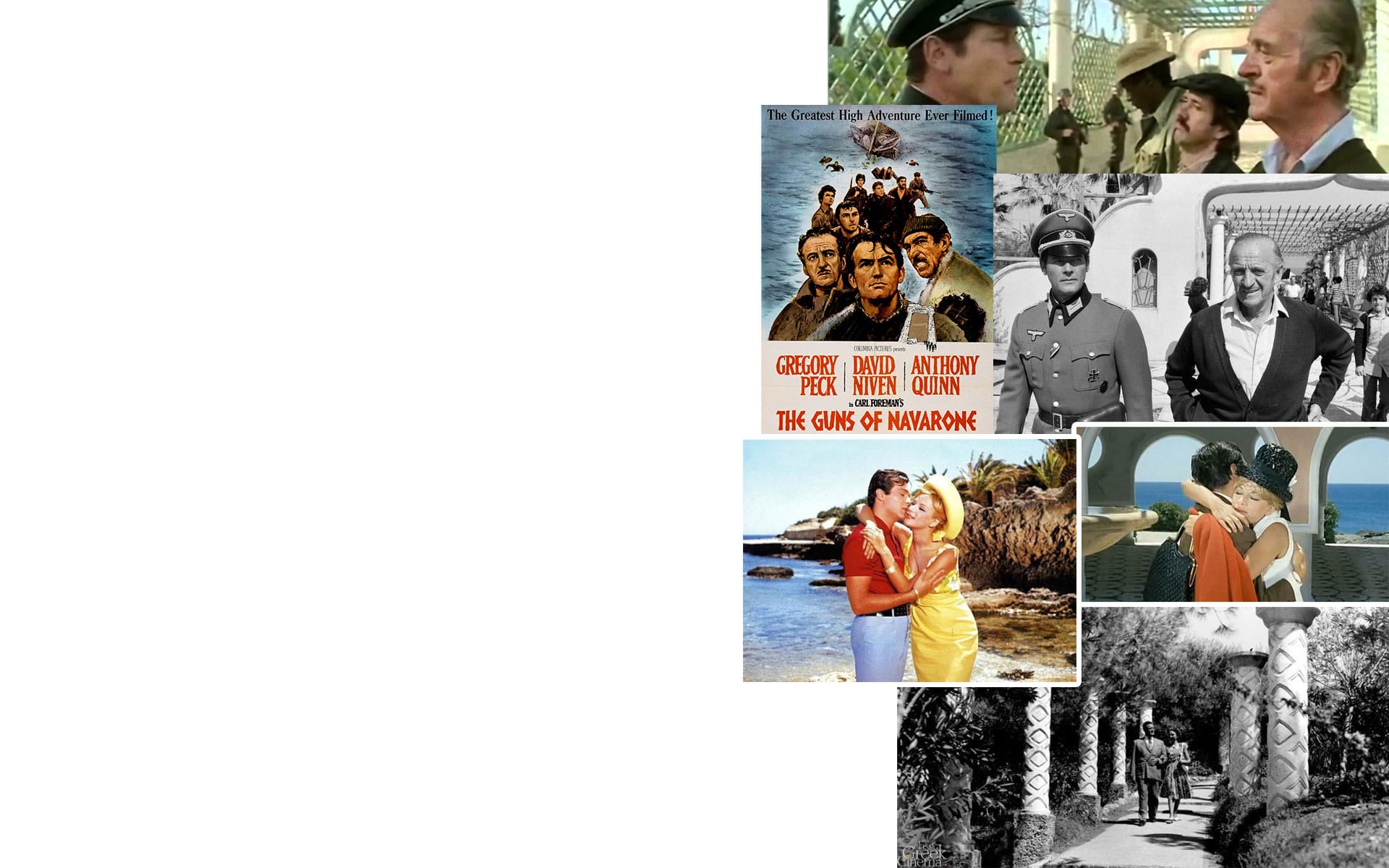
THE SPRINGS
IN FILMS
One can understand why such a unique natural setting would attract the interest of more than one film directors. Already at the time of Italian rule, “Kalitea” would frequently be featured in newsreels produced by Italian cameramen operating in Rhodes. The integration of the Dodecanese to the Hellenic national territory placed Rhodes in the spotlight of tourist interest, setting the island on an unprecedented course of development and prosperity, with a little help from the world of cinema. In 1948, Michail Gaziades, one of the pioneers of filmmaking in Greece, arrived in Rhodes for the shooting of the film “Anna Roditi” [Anna of Rhodes], expressly meant by its producers as a “Tribute to the Martyrdom of the People of the Dodecanese”.
During the golden era of the Greek filmmaking, in the ‘60s, more than one domestic production chose the site of the Springs as a natural setting. Classical takes like those featured in the production “To Doloma” [The Decoy] starring Aliki Vougiouklaki and Alekos Alexandrakis (1964 – Director: Alekos Sakellarios) have left an indelible mark on Greek collective memory. The ‘60s also brought international filmmakers to Rhodes. Amongst the more high-profile stars of the time, Yul Brynner came to the island to star in Surprise Package, a 1960 comedy directed by Stanley Donen. In 1979, Roger Moore, Telly Savalas, David Niven and Claudia Cardinale landed in Rhodes for the shooting of Escape to Athena, directed by George Cosmatos, a Greek-American cineaste who chose the site of the Springs of Kallithea for several and extensive scenes in his film. The Springs had previously also been the setting for yet another war film, an adventure under the title of “The Guns of Navarone” (1961) starring Gregory Peck, David Niven and Anthony Quinn. The film earned an Academy Award for best film effects and a Golden Globe Award for Best Drama Film and Best Scenario. Forever charmed by Rhodes, Anthony Quinn was to become a regular, despite the controversy that such affections of his were later to trigger feuds for the beachfront that still bears his name, to this day.
Find out more

THE SPRINGS
IN FILMS
Such a unique natural setting was expected to attract the interest of more than one film directors. Already at the time of Italian rule, “Kalitea” used to be frequently featured in newsreels produced by Italian cameramen operating in Rhodes. The integration of the Dodecanese in the Hellenic national territory catapulted Rhodes to the spotlight of tourist interest, setting the island on an unprecedented course of development and prosperity, with a little help from the world of cinema. In 1948, Michail Gaziades, one of the pioneers of filmmaking in Greece, arrived in Rhodes for the shooting of the film “Anna Roditi” [Anna of Rhodes], expressly meant by its producers as a “Tribute to the Martyrdom of the People of the Dodecanese”.
During the golden era of the Greek filmmaking, in the ‘60s, more than one domestic production chose the site of the Springs as a natural setting. Classical takes like those featured in the production “To Doloma” [The Decoy] starring Aliki Vougiouklaki and Alekos Alexandrakis (1964 – Director: Alekos Sakellarios) have left an indelible mark on Greek collective memory. The ‘60s also brought international filmmakers to Rhodes. Amongst the more high-profile stars of the time, Yul Brynner came to the island to star in Surprise Package, a 1960 comedy directed by Stanley Donen. In 1979, Roger Moore, Telly Savalas, David Niven and Claudia Cardinale landed in Rhodes for the shooting of Escape to Athena, directed by George Cosmatos, a Greek-American cineaste who chose the site of the Springs of Kallithea for several and extensive scenes in his film. The Springs had previously also been the setting for yet another war film, an adventure under the title of “The Guns of Navarone” (1961) starring Gregory Peck, David Niven and Anthony Quinn. The film earned an Academy Award for best film effects and a Golden Globe Award for Best Drama Film and Best Scenario. Forever charmed by Rhodes, Anthony Quinn was to become a regular, despite the controversy that such affections of his were later to trigger feuds for the beachfront that still bears his name, to this day.
Find out more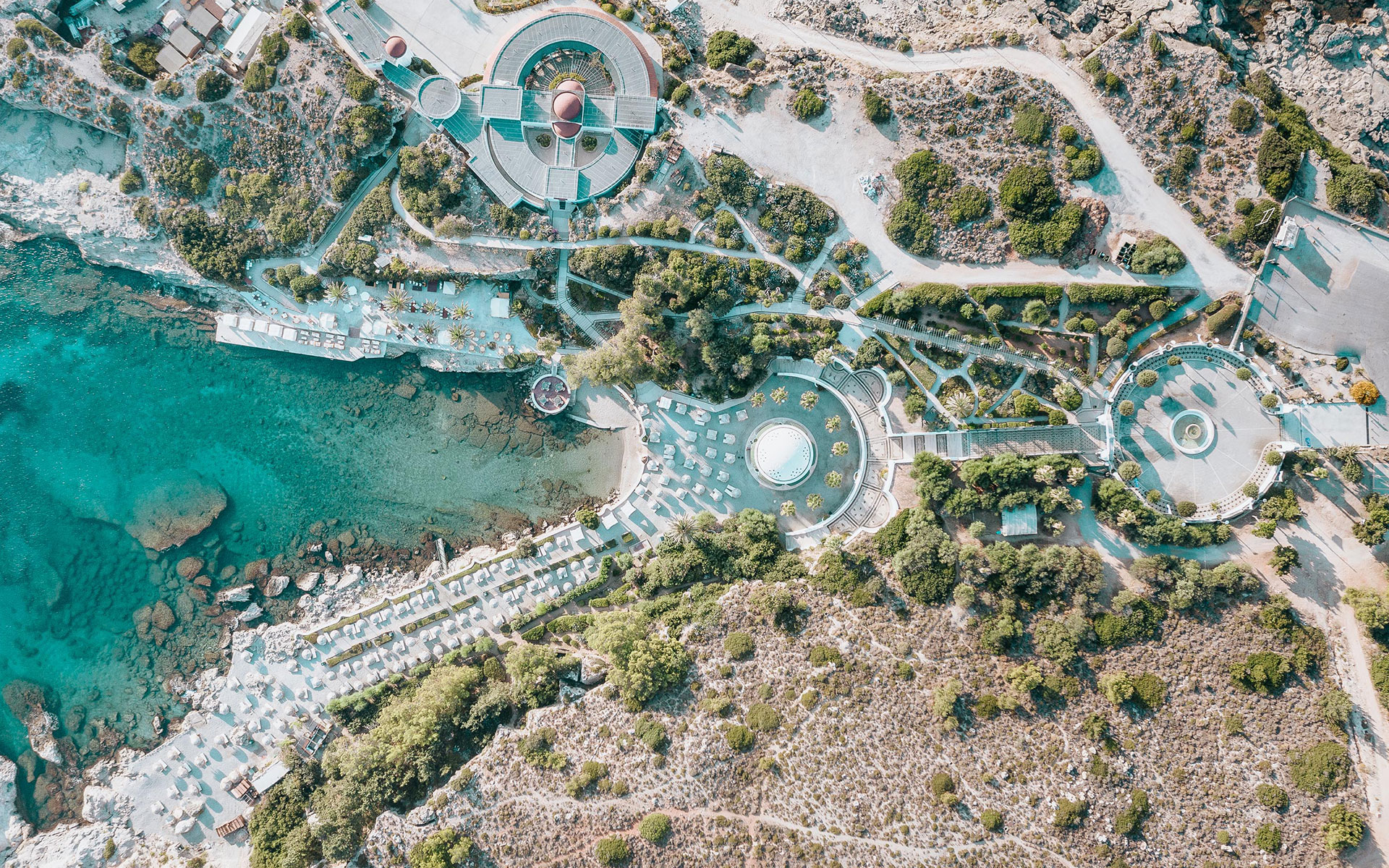
SALVAGING THE SITE
AND THE COMPLEX
After 1967 and for several years, the site was left to decay, with the bygone grandeur of the Springs only surviving in peoples’ memories…
And then came Ioannis Iatridis, the visionary Mayor of the Municipality of Kallithea, who decided on the restitution of the site and the reinstatement of the complex to its original glory, what would become, a cause célèbre. Assuming the site to be a fundamental feature for the financial and cultural development of his Municipality as well as of the island as a whole, Ioannis Iatridis embarked on a series of actions along three principal axes, namely “Reclamation” – “Reinstatement” – “Development”.
A Until then, the site had been the property of the Hellenic Tourism Organisation (EOT). A series of initiatives were developed and adopted, lasting from 1999 until 2011, climaxing to a motion adopted by the Hellenic Parliament deciding on the cession of property rights to the Municipality.
B Following, actions were taken for the reinstatement of the site. In 1993, Kallithea was referred to as “a shadow of its past glory”. However, financial investments started to yield, making it possible for the external part of the complex to be cleaned and the surrounding area to be re-planted with trees. Additionally, new projects were realized for the layout of the water basin area, the car park and an open-air theatre (1999 – 2009). The year 1999 saw the restoration of the monumental entrance and in 2003 clearance was obtained for a public procurement to be launched, for the restoration of the “Great Rotunda”. Meanwhile, in 2001, a second contract was awarded by the Hellenic Tourism Organization for the Dome’s restoration, followed by another award in 2005, aimed at the renovation of the Grotto, a research project conducted by the Municipality’s technical services and financed with municipal resources. On the day of the site’s formal reopening ceremony in 2007, in the presence of the Minister for the Development of Tourism and members of Anthony Quinn’s family, amongst others, the outcome of such a tremendous effort was more than palpable, verifying the obvious fact that the Kallithea Springs were much more than the revival of a legend. The project for the reinstatement of the Springs was a vital generator of touristic and cultural development.
C The third axis of the Mayor’s actions involved the rapprochement of the Hellenic Survey of Geology and Mineral Exportation (2001), the National Technical University of Athens, the School of Medicine of the University of Athens and the Panteion University of Athens. During 2001 to 2008, all the aforementioned institutions worked on a series of research projects towards proving and formally certifying the Springs’ curative properties. The relevant decree which was published in the Official Journal of the Hellenic government also confirmed the idealness of the climate and bio-climate of the extended area whereas proposals were now formally submitted for the future development of the site. Starting in 2011, Ioannis Iatridis, who had by that time been placed head of the Municipal Enterprise of Rhodes (DERMAE) within the new, integrated frame of the local government, engaged into a conscientious effort towards the improvement and projection of the site of Kallithea Springs.

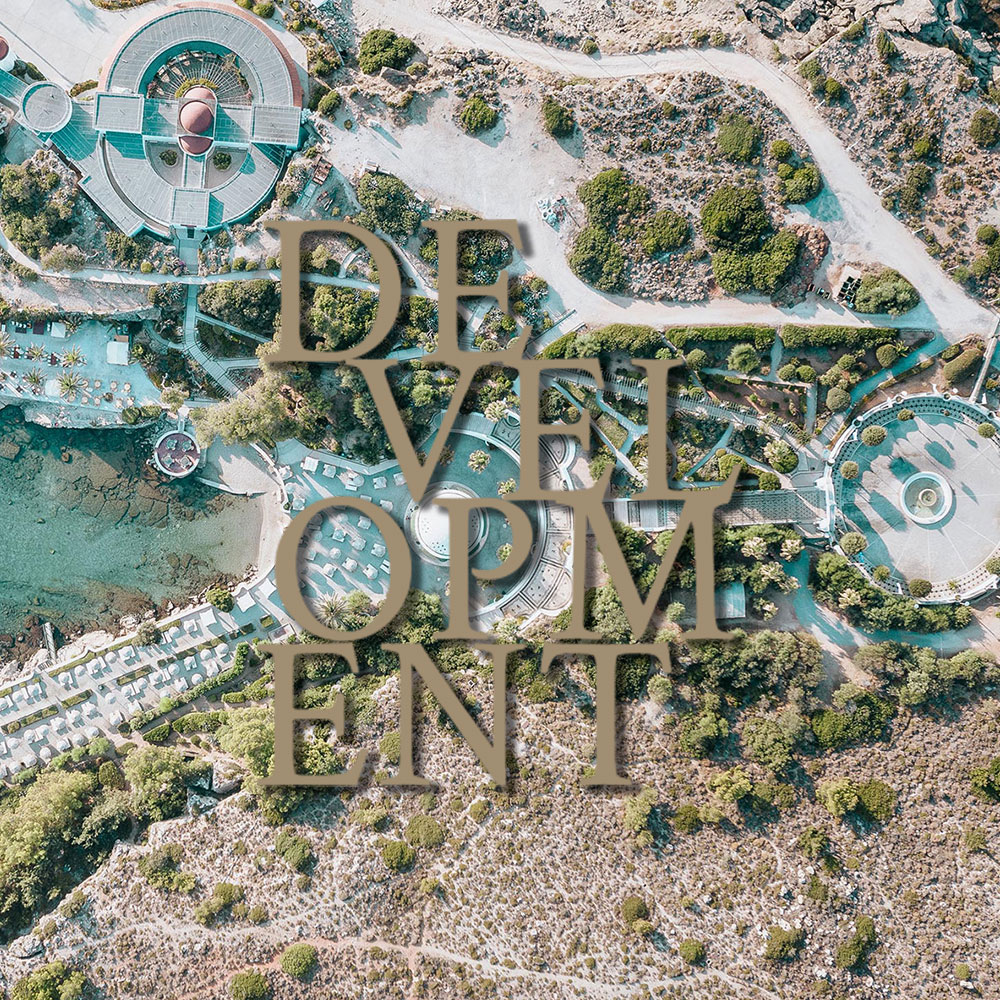
SALVAGING THE SITE
AND THE COMPLEX
After 1967 and for several years, the site was left to decay, with the bygone grandeur of the Springs only surviving in peoples’ memories…
And then came Ioannis Iatridis, the visionary Mayor of the Municipality of Kallithea, who decided on the restitution of the site and the reinstatement of the complex to its original glory, what would become, a cause célèbre. Assuming the site to be a fundamental feature for the financial and cultural development of his Municipality as well as of the island as a whole, Ioannis Iatridis embarked on a series of actions along three principal axes, namely “Reclamation” – “Reinstatement” – “Development”.
A Until then, the site had been the property of the Hellenic Tourism Organisation (EOT). A series of initiatives were developed and adopted, lasting from 1999 until 2011, climaxing to a motion adopted by the Hellenic Parliament deciding on the cession of property rights to the Municipality.
B Following, actions were taken for the reinstatement of the site. In 1993, Kallithea was referred to as “a shadow of its past glory”. However, financial investments started to yield, making it possible for the external part of the complex to be cleaned and the surrounding area to be re-planted with trees. Additionally, new projects were realized for the layout of the water basin area, the car park and an open-air theatre (1999 – 2009). The year 1999 saw the restoration of the monumental entrance and in 2003 clearance was obtained for a public procurement to be launched, for the restoration of the “Great Rotunda”. Meanwhile, in 2001, a second contract was awarded by the Hellenic Tourism Organization for the Dome’s restoration, followed by another award in 2005, aimed at the renovation of the Grotto, a research project conducted by the Municipality’s technical services and financed with municipal resources. On the day of the site’s formal reopening ceremony in 2007, in the presence of the Minister for the Development of Tourism and members of Anthony Quinn’s family, amongst others, the outcome of such a tremendous effort was more than palpable, verifying the obvious fact that the Kallithea Springs were much more than the revival of a legend. The project for the reinstatement of the Springs was a vital generator of touristic and cultural development.
C The third axis of the Mayor’s actions involved the rapprochement of the Hellenic Survey of Geology and Mineral Exportation (2001), the National Technical University of Athens, the School of Medicine of the University of Athens and the Panteion University of Athens. During 2001 to 2008, all the aforementioned institutions worked on a series of research projects towards proving and formally certifying the Springs’ curative properties. The relevant decree which was published in the Official Journal of the Hellenic government also confirmed the idealness of the climate and bio-climate of the extended area whereas proposals were now formally submitted for the future development of the site. Starting in 2011, Ioannis Iatridis, who had by that time been placed head of the Municipal Enterprise of Rhodes (DERMAE) within the new, integrated frame of the local government, engaged into a conscientious effort towards the improvement and projection of the site of Kallithea Springs.

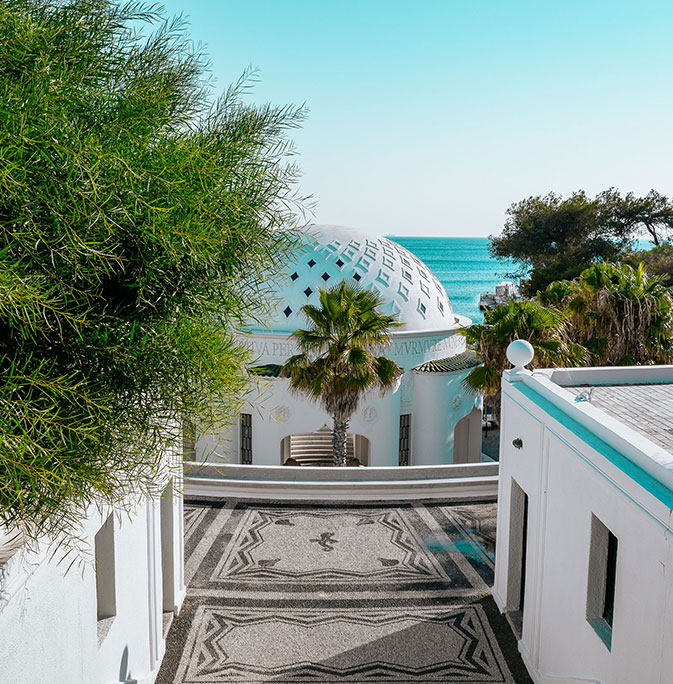
THE SITETODAY
At present, the site of Kallithea Springs is once again much more than Mario Lago’s original vision. Fully refurbished, the buildings of the complex play host to thousands of visitors of all nationalities, countries and cultures, just as they once did. This is the definitive “Site of Four Seasons”, eternally capable of adjusting to the realities of financial and cultural circumstances; a unique setting for trade events of all types, an exceptional conference-hosting site, a mythical context for social events and the ideal place for people to gather at anytime, even in the heart of winter!
Beautiful, like Aphrodite submerging from the sea, a value as solid as the rocks that support it, Kallithea past and present will never cease to heal the eyes and souls of those who come to visit it.

